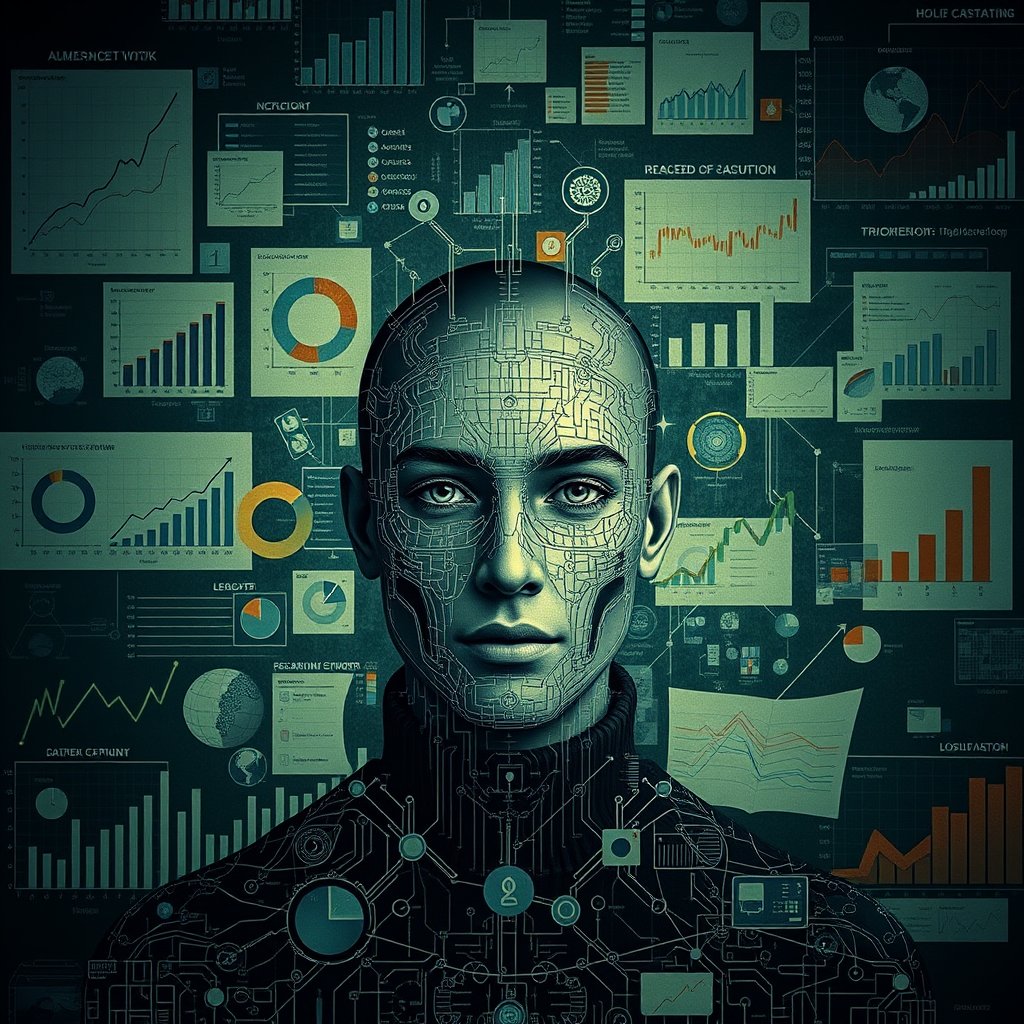The SaaS business model has a math problem.
To grow, you need more customers. More customers require more customer success managers, more support agents, more sales reps, more implementation specialists. Your revenue grows linearly, but so do your costs. The result? SaaS companies plateau when headcount costs catch up to revenue growth.
The industry has tried to solve this with better software tools, documented processes, and efficiency improvements. Yet the fundamental constraint remains: human-intensive workflows don't scale at software margins.
The average SaaS company spends:
- 25-35% of revenue on sales and marketing
- 15-20% of revenue on customer success and support
- 10-15% of revenue on implementation and professional services
That's 50-70% of revenue consumed by human-intensive operations in a business model that's supposed to have 80%+ gross margins.
Enter FluxAI agents—autonomous systems that handle the human-intensive workflows that prevent SaaS companies from achieving true software economics. Companies deploying AI agents are reporting 40-60% reduction in operational costs while simultaneously improving customer satisfaction, retention, and expansion revenue.
This isn't incremental improvement. It's a fundamental restructuring of SaaS unit economics.
Here's how AI agents are transforming every function of the SaaS business model.
The SaaS Scaling Problem
Before we explore solutions, let's understand why SaaS companies hit growth ceilings.
Consider a typical SaaS company at $20M ARR:
- 500 customers paying an average of $40K annually
- Customer Success team: 8 CSMs (1:62 customer ratio)
- Support team: 12 agents handling 2,000+ tickets monthly
- Sales team: 15 AEs, 10 SDRs converting trials and demos
- Implementation: 6 specialists onboarding 15-20 customers monthly
To reach $40M ARR, they need to double customers. Which means:
- 16 CSMs (or accept declining service quality and higher churn)
- 24 support agents (or face increasing response times)
- 30 AEs and 20 SDRs (sales rarely scales linearly with revenue)
- 12 implementation specialists (or extend onboarding timelines)
The reality: To double revenue, they nearly double headcount. The company grows, but margins compress. Unit economics deteriorate. The path to profitability extends.
This is why so many SaaS companies stall between $20M-50M ARR. The operational overhead required to serve more customers consumes the revenue those customers generate.
How FluxAI Agents Fundamentally Change SaaS Economics
AI agents don't just make SaaS operations more efficient—they break the linear relationship between revenue growth and headcount growth.
Here's how AI agents transform each critical SaaS function:
Kris - Customer Success Agent
Customer success is the lifeblood of SaaS. High retention and expansion drive valuations. But CSM capacity limits growth.
What Kris does:
- Monitors product usage patterns to identify at-risk accounts automatically
- Triggers proactive outreach when engagement drops
- Schedules quarterly business reviews based on customer health
- Tracks feature adoption and recommends next steps
- Identifies expansion opportunities based on usage patterns
- Manages health scores across entire customer portfolio
Real-world impact:
A B2B SaaS company with $35M ARR deployed Kris to augment their 12-person CS team:
- Customer portfolio per CSM increased from 45 to 120 - AI handles monitoring and routine touchpoints
- At-risk identification improved from 30% to 85% - AI spots warning signs humans miss
- Net revenue retention increased from 105% to 118% - Better expansion identification
- Gross churn decreased from 8% to 4.5% - Proactive intervention before customers cancel
The VP of Customer Success explained: "Kris doesn't replace my CSMs—it makes them superhuman. They used to spend 60% of their time monitoring accounts and scheduling check-ins. Now that's automated, and they spend their time on strategic conversations, executive relationships, and high-touch support where human expertise matters."
The economics: Instead of hiring 12 additional CSMs to double the customer base ($1.8M annual cost), they deployed Kris ($180K annually) and added just 4 CSMs. That's a $1.26M annual savings while improving service quality.
Jackson - Customer Onboarding Agent
Time-to-value determines whether customers become champions or churn in month two. But personalized onboarding doesn't scale.
What Jackson does:
- Guides new customers through setup and configuration automatically
- Delivers personalized training based on use case and role
- Tracks onboarding milestone completion
- Escalates stalled implementations to CSMs with full context
- Sends contextual tips based on actual user behavior
- Measures time-to-value metrics by customer segment
Real-world impact:
A workflow automation SaaS company implemented Jackson:
- Time-to-first-value decreased from 45 days to 12 days - Automated guidance accelerates setup
- Implementation churn dropped from 15% to 3% - Customers activate before losing interest
- CSM onboarding capacity tripled - Same team handles 3x more new customers
- Expansion revenue from new customers up 23% - Faster activation leads to earlier upsells
The Chief Customer Officer noted: "Customers used to wait days for onboarding calls, then forget what they learned. Jackson provides just-in-time guidance exactly when users need it. They activate features faster, see value sooner, and expand more quickly."
The economics: Traditional onboarding required 1 specialist per 3-4 customers monthly ($90K salary). Jackson handles 30-40 customers monthly ($15K annually). That's an 85% cost reduction with better outcomes.
Charlotte - Technical Support Agent
Support costs scale linearly with customers. Every 100 new customers generate 150-200 monthly tickets. More customers mean more support agents—except when AI handles tier 1 and tier 2.
What Charlotte does:
- Handles tier 1 support tickets autonomously (password resets, basic troubleshooting)
- Routes complex issues to appropriate specialists with full context
- Searches knowledge base and documentation for solutions
- Tracks bug reports and feature requests by theme
- Escalates critical issues affecting multiple customers immediately
- Measures MTTR and customer satisfaction by issue type
Real-world impact:
A project management SaaS with 2,500 customers deployed Charlotte:
- Tier 1/2 tickets resolved autonomously: 68% - Humans handle only complex issues
- Average response time: 30 seconds vs. 4 hours - AI responds instantly 24/7
- Support team size maintained despite 60% customer growth - Same team, more customers
- CSAT scores increased from 78% to 89% - Faster response, consistent quality
The Support Director explained: "We were hiring a support agent for every 200 new customers. With Charlotte, we've added 1,500 customers and only hired 2 additional agents—and that's just for complex technical issues. Our team loves it because they're solving interesting problems instead of resetting passwords."
The economics: Without AI, they would have needed 7 additional support agents ($560K annually). With Charlotte, they added 2 agents and the AI platform ($240K total). That's a $320K annual savings with better service levels.
Mateo - Lead Scoring Agent
SaaS sales teams waste 50-60% of their time on unqualified leads. AI agents ensure sales reps only talk to prospects ready to buy.
What Mateo does:
- Evaluates inbound leads based on firmographic and behavioral data
- Routes qualified leads to appropriate sales reps instantly
- Nurtures early-stage prospects until sales-ready
- Identifies product-qualified leads (PQLs) from trial behavior
- Prioritizes accounts showing buying signals
- Predicts conversion likelihood and deal size
Real-world impact:
An analytics SaaS company implemented Mateo to optimize their sales process:
- Sales rep productivity increased 45% - Only talking to qualified opportunities
- Lead-to-opportunity conversion improved from 12% to 28% - Better qualification
- Sales cycle shortened by 18 days - Reps engage prospects at optimal moment
- Win rate increased from 22% to 34% - Better prospect-product fit
The CRO shared: "Our SDRs were chasing every demo request equally. Mateo scores every lead and tells us 'this one will close in 30 days at $50K' or 'this one needs 6 months of nurturing.' We focus our expensive sales resources where they'll actually close deals."
The economics: Same sales team is now closing 60% more deals without additional headcount. That's pure margin expansion—revenue growth without cost growth.
Donovan - Deal Management Agent
SaaS deals have 20-30 steps from first demo to signature. Tracking everything manually means deals slip through cracks.
What Donovan does:
- Tracks deal progression through pipeline stages automatically
- Identifies stalled deals and recommends interventions
- Generates automated follow-ups at key milestones
- Coordinates demo scheduling and proposal delivery
- Manages contract renewals and expansion opportunities
- Alerts to churn risk during renewal cycles
Real-world impact:
A collaboration SaaS deployed Donovan across their sales and CS teams:
- Deal slippage reduced by 40% - Proactive alerts prevent forgotten follow-ups
- Renewal rate increased from 88% to 94% - Early churn risk identification
- Expansion revenue up 31% - Systematic identification of upsell opportunities
- Average deal size increased 12% - Better multi-stakeholder coordination
The VP of Sales explained: "Deals used to die in silence. A prospect wouldn't respond, and we'd forget to follow up. Donovan ensures nothing falls through the cracks and tells us exactly which deals need attention and why."
The economics: Higher win rates and better renewals mean the same sales team generates 25-30% more revenue. That's millions in additional ARR without adding salespeople.
Mea - Revenue Operations Agent
SaaS revenue operations—billing, invoicing, payment processing, revenue recognition—is complex and error-prone when manual.
What Mea does:
- Automates invoice generation and payment processing
- Manages failed payment recovery workflows
- Handles subscription upgrades, downgrades, cancellations
- Processes refunds and credits accurately
- Tracks MRR, ARR, churn, and expansion metrics in real-time
- Generates revenue forecasts and board reports
Real-world impact:
A marketing SaaS with 1,200 customers implemented Mea:
- Failed payment recovery improved from 40% to 72% - Automated dunning and retry logic
- Involuntary churn reduced by 3.2% - Better payment recovery = less accidental churn
- Revenue ops team reduced from 5 to 2 - Automation eliminated manual processing
- Billing errors decreased 94% - AI doesn't make calculation mistakes
The CFO noted: "We were losing $480K annually to failed payments we couldn't recover. Mea recovered most of that in the first 90 days. And our finance team finally has time for strategic work instead of hunting down expired credit cards."
The economics: Mea recovered $345K in failed payments (pure profit) while reducing finance headcount by 3 ($360K savings). That's a $705K annual impact.
Lacey - Marketing Automation Agent
SaaS marketing requires sophisticated segmentation and personalization at scale. AI agents make this operationally feasible.
What Lacey does:
- Segments users based on behavior, firmographics, and engagement
- Triggers personalized email campaigns (trial conversion, feature adoption, renewal)
- Manages drip campaigns for different user journeys
- A/B tests messaging, timing, and offers continuously
- Tracks campaign attribution and conversion
- Personalizes in-app messaging based on user context
Real-world impact:
A CRM SaaS company deployed Lacey to optimize marketing:
- Trial-to-paid conversion increased from 14% to 23% - Better trial nurturing
- Email engagement rates up 35% - Personalized, behavior-triggered campaigns
- Marketing team productivity doubled - Same team, 2x campaign output
- Customer acquisition cost decreased 18% - Better conversion at every stage
The CMO explained: "We used to send the same email to all trial users. Lacey personalizes based on what features they've used, what industry they're in, and where they are in the journey. Conversion rates prove it works."
The economics: Higher conversion rates mean acquiring customers more efficiently. An 18% reduction in CAC on $5M marketing spend is $900K in savings annually while growing faster.
The Compounding Effect: AI Agents Working Together
The real power emerges when multiple AI agents work together across the customer lifecycle:
Customer Journey with Integrated AI Agents:
- Mateo scores inbound lead, routes to sales
- Donovan manages deal progression, ensures no steps missed
- Jackson guides customer through implementation
- Kris monitors usage, prevents churn, identifies expansion
- Charlotte handles support requests autonomously
- Mea manages billing, prevents payment failures
- Lacey nurtures for upsells and renewals
Each agent shares data with the others. Mateo's lead score informs Donovan's prioritization. Jackson's progress updates Kris's health score. Charlotte's ticket patterns inform Lacey's educational campaigns.
The result: A seamless, automated customer lifecycle that scales infinitely without proportional headcount growth.
The New SaaS Unit Economics
Here's how AI agents transform SaaS financial models:
Traditional SaaS Company ($20M ARR → $40M ARR):
Without AI Agents:
- Customer Success: 8 → 16 CSMs ($1.6M → $3.2M)
- Support: 12 → 24 agents ($840K → $1.68M)
- Sales: 25 → 50 reps ($3.75M → $7.5M)
- Implementation: 6 → 12 specialists ($720K → $1.44M)
- Total operational cost: $6.9M → $13.84M (doubling with revenue)
- Operating margin: Compressed from 35% to 31%
With AI Agents:
- Customer Success: 8 → 12 CSMs + Kris ($1.6M → $2.4M)
- Support: 12 → 15 agents + Charlotte ($840K → $1.2M)
- Sales: 25 → 35 reps + Mateo/Donovan ($3.75M → $5.4M)
- Implementation: 6 → 7 specialists + Jackson ($720K → $945K)
- AI Agent platform costs: $600K annually
- Total operational cost: $6.9M → $10.5M (52% increase for 100% revenue growth)
- Operating margin: Expanded from 35% to 47%
The difference: $3.34M in annual savings while serving customers better. Those savings flow directly to EBITDA and company valuation.
At a 10x revenue multiple, that's $33.4M in additional enterprise value.
Measurable Impact Across Key SaaS Metrics
SaaS companies deploying AI agents see improvements across all critical metrics:
Customer Acquisition:
- 25-40% reduction in CAC - Better qualification and conversion
- 15-25% improvement in trial-to-paid conversion - Automated, personalized onboarding
- 20-30% increase in sales productivity - Reps focus on closeable deals
- 30-45% shorter sales cycles - Better coordination and follow-up
Customer Retention:
- 20-35% reduction in gross churn - Proactive intervention before cancellation
- 15-25% increase in net revenue retention - Better expansion identification
- 40-60% improvement in at-risk customer identification - AI spots patterns humans miss
- 50-70% reduction in implementation churn - Faster time-to-value
Operational Efficiency:
- 40-60% reduction in support costs per customer - Autonomous tier 1/2 resolution
- 60-75% decrease in CS administrative overhead - Automated monitoring and outreach
- 35-50% improvement in onboarding capacity - Same team handles more customers
- 25-40% reduction in revenue operations costs - Automated billing and collections
Revenue Growth:
- 30-45% increase in expansion revenue - Systematic upsell identification
- 15-25% improvement in revenue recovery - Failed payment automation
- 20-30% boost in cross-sell success - Usage-based recommendations
- 10-20% increase in annual contract value - Better multi-stakeholder engagement
Implementation Roadmap: From Pilot to Scale
SaaS companies successfully deploying AI agents follow a systematic approach:
Phase 1: Identify the Constraint (Week 1-2)
Determine which operational bottleneck is limiting growth:
- If churn is high: Start with Kris (Customer Success)
- If onboarding is slow: Start with Jackson
- If support is overwhelmed: Start with Charlotte
- If sales conversion is low: Start with Mateo
- If failed payments are significant: Start with Mea
Don't try to solve everything at once. Find the biggest constraint to growth and address it first.
Phase 2: Pilot with One Agent (Month 1-2)
Deploy one AI agent in a controlled environment:
- Select 100-200 customers for CS agents
- Choose one product or segment for support agents
- Test on 20% of sales pipeline for sales agents
Measure everything:
- Operational metrics (time saved, tickets resolved, deals closed)
- Customer metrics (satisfaction, engagement, retention)
- Financial metrics (cost per customer, revenue per employee)
Phase 3: Refine and Optimize (Month 3)
Based on pilot results:
- Adjust agent training and prompts
- Refine escalation criteria
- Integrate with additional systems
- Gather team feedback and address concerns
Critical success factor: Involve the teams using the agents in optimization. They know what works and what doesn't.
Phase 4: Scale Systematically (Month 4-6)
Roll out successful agents to full customer base:
- Expand to all customers/prospects
- Add complementary agents that integrate with the first
- Document processes and train additional team members
- Establish KPIs for ongoing monitoring
Phase 5: Expand Capabilities (Month 7-12)
Deploy additional agents across the customer lifecycle:
- If you started with CS, add support and onboarding
- If you started with sales, add CS and marketing
- Build the complete AI-augmented customer lifecycle
The goal: By month 12, have AI agents handling the majority of routine workflows across every customer-facing function.
Real-World Success Story: Mid-Market SaaS Transformation
A project management SaaS company at $28M ARR implemented AI agents systematically over 12 months:
Starting Position:
- 680 customers, $41K average ACV
- 22% gross churn (industry standard: 15-20%)
- 102% net revenue retention (industry leader: 120%+)
- 68 employees (28 in customer-facing roles)
- 38% EBITDA margin
- Growing 45% YoY but hiring outpacing revenue growth
Implementation Timeline:
Months 1-3: Customer Success Focus
- Deployed Kris to support 10-person CS team
- Focused on churn prevention and expansion identification
- Result: At-risk identification up 3x, proactive interventions increased 250%
Months 4-6: Support and Onboarding
- Added Charlotte for tier 1/2 support
- Deployed Jackson for new customer activation
- Result: Support tickets resolved autonomously: 65%, time-to-value cut in half
Months 7-9: Sales and Marketing
- Implemented Mateo for lead scoring
- Deployed Lacey for trial nurture campaigns
- Result: Trial conversion up 9 percentage points, sales productivity up 38%
Months 10-12: Revenue Operations
- Added Mea for billing automation
- Integrated all agents for full lifecycle coverage
- Result: Failed payment recovery up 60%, billing errors down 92%
12-Month Results:
Customer Metrics:
- Gross churn: 22% → 14% (saving $2.2M ARR)
- Net revenue retention: 102% → 121%
- Customer satisfaction (NPS): 32 → 51
Operational Metrics:
- Customers per CSM: 68 → 142 (adding only 2 CSMs despite 50% customer growth)
- Support cost per customer: $94 → $38
- Onboarding capacity: 2.8x improvement with same team
Financial Metrics:
- Revenue: $28M → $43M ARR (54% growth)
- Customer-facing headcount: 28 → 34 (21% growth vs. 54% revenue growth)
- EBITDA margin: 38% → 52%
- Enterprise value (at 10x ARR): $280M → $430M (+$150M)
CEO's Perspective:
"We were on the venture treadmill—grow fast but never improve unit economics. Every dollar of new revenue required 80 cents of additional costs. AI agents broke that pattern. We're now adding revenue at 30-40% incremental margins because we're not adding proportional headcount.
The impact goes beyond numbers. Our team is happier because they're doing meaningful work instead of repetitive tasks. Our customers are happier because they get instant responses and proactive support. Our investors are happier because margins are expanding while we grow.
AI agents didn't just make us more efficient. They fundamentally changed our business model from labor-intensive to truly scalable software."
The Competitive Implications
SaaS companies deploying AI agents gain insurmountable advantages:
1. Unit Economics Advantage
Companies with AI-optimized operations can:
- Afford higher CAC while maintaining profitability
- Outspend competitors on customer acquisition
- Win deals through superior service at competitive pricing
- Invest more in product development from operational savings
2. Velocity Advantage
AI-augmented teams move faster:
- Respond to customers in seconds, not hours
- Onboard customers in days, not weeks
- Identify and act on expansion opportunities immediately
- Adapt to market changes without organizational friction
3. Experience Advantage
Customers increasingly expect:
- Instant, accurate responses to questions
- Proactive outreach based on their behavior
- Personalized experiences at scale
- Seamless interactions across all touchpoints
Companies without AI agents can't deliver these experiences profitably.
4. Data Advantage
AI agents generate massive amounts of behavioral data:
- What questions do customers ask most?
- Where do users get stuck in onboarding?
- What triggers churn vs. expansion?
- Which features drive retention?
This data informs product development, creating a compounding advantage.
The Uncomfortable Truth: The Divide is Widening
The SaaS industry is splitting into two categories:
AI-Native SaaS Companies:
- Designed from the ground up with AI agents integrated
- 70-80% gross margins with 30-40% EBITDA margins
- Grow 50-100% annually while expanding margins
- $1M+ revenue per employee
- Trade at premium valuations (12-15x ARR)
Traditional SaaS Companies:
- Human-intensive operations limiting scalability
- 60-70% gross margins but 10-20% EBITDA margins
- Growth requires proportional cost growth
- $200-300K revenue per employee
- Trade at standard valuations (6-8x ARR)
The gap between these two categories is widening monthly. AI-native companies are raising capital more easily, acquiring customers more efficiently, and achieving profitability faster.
Traditional SaaS companies face a choice: transform operations with AI agents or accept a permanent competitive disadvantage.
Looking Ahead: The Future of SaaS
The next evolution of SaaS isn't just about AI agents handling existing workflows better—it's about fundamentally reimagining what's possible:
Near-Term (1-2 years):
- AI agents become standard across all SaaS functions
- Companies achieve 80%+ gross margins with 40%+ EBITDA margins
- Customer success, support, and sales become AI-first with human escalation
- Revenue per employee exceeds $500K (vs. industry average of $150K today)
Medium-Term (3-5 years):
- Predictive AI prevents churn before customers realize they're dissatisfied
- Proactive expansion identification and execution (AI initiates upsells)
- Autonomous renewal management (AI handles 90%+ of renewals)
- Self-optimizing pricing and packaging based on customer behavior
Long-Term (5-10 years):
- AI agents as primary customer interface (humans for strategic relationships only)
- Fully autonomous customer lifecycle from acquisition through expansion
- SaaS companies run with 10x fewer employees than today
- Gross margins approach 90%+ as human costs become negligible
The vision: SaaS companies that achieve true software economics—revenue that scales infinitely without operational costs scaling proportionally.
The Strategic Imperative
For SaaS leaders, the question isn't "should we deploy AI agents?" It's "how quickly can we transform our operations before competitors gain insurmountable advantages?"
The window is closing. Early adopters are already achieving 40-50% EBITDA margins while competitors struggle at 15-20%. As AI agents become more sophisticated and widely available, the competitive advantage will accrue to those who:
- Start now - Learning to work with AI agents takes time; late starters will never catch up
- Think systematically - AI agents across the full lifecycle, not point solutions
- Invest in transition - Retrain teams, redesign processes, rebuild around AI-first operations
- Measure relentlessly - Track impact, optimize continuously, scale what works
The economics are undeniable:
- Reduce operational costs 40-60%
- Improve customer satisfaction 20-30%
- Increase retention and expansion 25-40%
- Grow revenue without proportional cost growth
The strategic reality:
In 2-3 years, investors will ask: "What percentage of your operations are AI-augmented?" Companies below 70% will trade at discounts. Those above 90% will command premium valuations.
The SaaS business model was always supposed to have software economics—high margins, infinite scalability. AI agents finally make that possible.
The question is: Will your company lead this transformation or struggle to survive it?
Ready to explore how AI agents can transform your SaaS operations?
At FluxAI, we've helped SaaS companies deploy AI agents that reduce costs, improve retention, and expand margins. We offer complimentary operational assessments to identify your highest-impact opportunities for AI agent deployment.
Learn more at fluxagents.ai or schedule a consultation to see how AI agents would transform your specific SaaS business model.
The future of SaaS isn't human-intensive operations. It's AI agents delivering software economics at scale.



